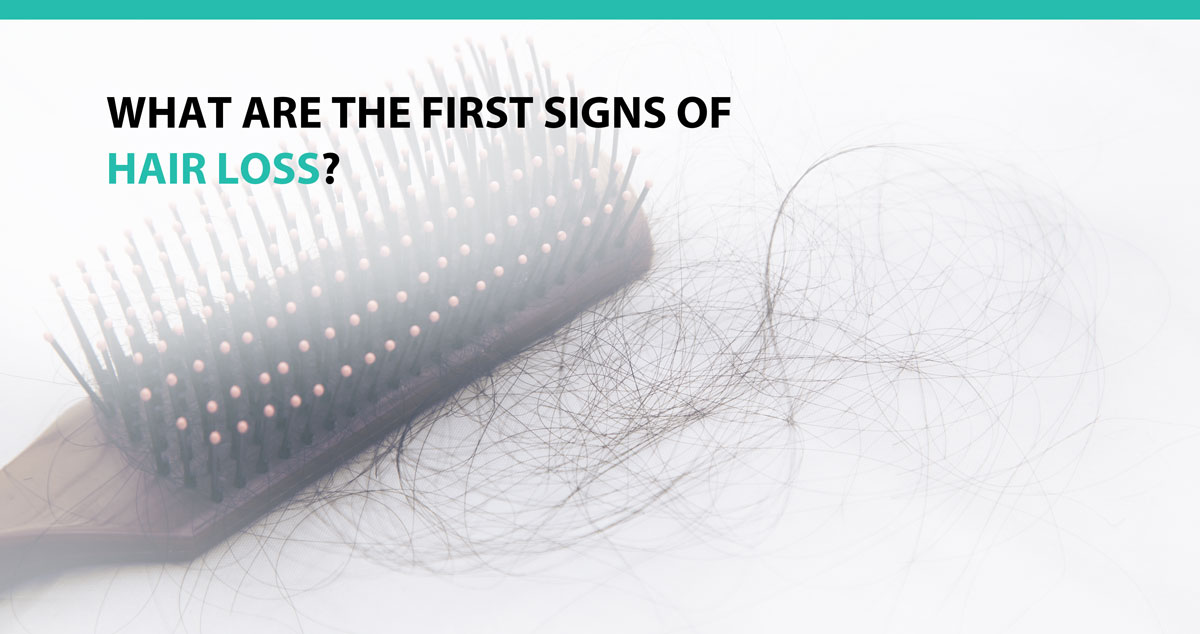
Hair loss may occur for several reasons ranging from medication and stress to genetics. Since it affects everyone differently, some people start experiencing hair loss as early as in their 20s, while others start noticing it in their 50s. In most cases, male pattern baldness occurs gradually, which makes it difficult to detect. Fortunately, there are always distinct signs that can help you identify the onset of alopecia for you to take action. To help you identify and treat alopecia early, here are common first signs of hair loss that you need to know.
- Receding Hairline
Hair loss in men usually begins from the temples. If you notice that your hairline is receding, you may be experiencing a case of male pattern baldness. Usually, you start losing hair from your temples which causes your hairline to form a deep M shape. In severe cases, the hairline may recede, leaving only a strip of hair at the back and sides of your head.
Since it can be challenging to monitor a receding hairline, taking pictures every month can help. Doing so will help you keep track of your hairline and establish whether you need to see a hair specialist. Ensure that you take the pictures in the same lighting conditions as some lighting may make your hair look thinner than it is.
- Hair Thinning
While a receding hairline is the most common hair loss symptom in men, some people experience diffuse thinning. It refers to losing hair gradually from the entire scalp or the crown of the head downwards. Hair thinning on your scalp can therefore point to male pattern baldness. Like in the case of a receding hairline, you can take photos of your hair every few months for comparison. You may also notice hair thinning on your eyebrows, beard, or lashes which may eventually lead to hair loss throughout the body.
- Noticeable Hair Loss When Showering or Brushing
We shed about 100 hairs daily. Therefore, losing some hair when combing, brushing, or showering should not be cause for alarm. You may also notice more shedding if you go days without combing or washing your hair. However, if you start shedding more hair every day when showering or brushing, it could be a sign of alopecia.
While it may point to androgenetic alopecia, it may also be a sign of temporary hair loss due to medication, stress, or even fever. Temporary hair loss goes away once you deal with the underlying cause. As a rule of the thumb, you should always seek professional help if you start losing excess hair, so you can find the sources and boost your chances of successful treatment.
- Nail Changes
Your nails can tell you a lot about your health and can be one of the best indicators of alopecia. Check your nails and nailbeds for white lines, rough edges, pitting, or small craters as they are signs of alopecia. The changes can occur on one or multiple nails and may affect your fingers or toes. While other conditions like fungus and trauma may change your nail’s appearance, you should visit a hair specialist if the changes come with hair loss.
Contact Dr. William for Hair Restoration Services
Early identification of hair loss can help you identify the root cause and address it, giving you a better chance of reversing or slowing it down. If you notice the above signs, it is advisable to contact a hair specialist. Dr. Williams from Advanced Medical Hair Institute has the expertise and technology to help you treat hair loss and regain your confidence. Schedule an appointment today for reliable and natural-looking hair solutions. You can also call us on 888-357-0888.










